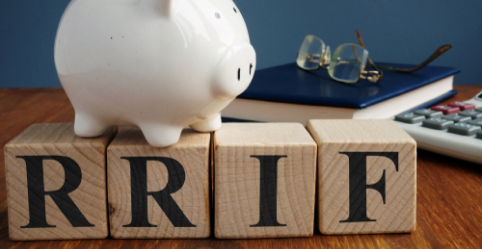What is a RRIF?
You’ve been working hard to put your money into your RRSP. What happens next? Learn about RRIFs so that you can confidently move towards retirement.

Like many Canadians, you’ve been working hard to put money into your RRSP: A recent study showed that 43% of Canadians with an RRSP are doing so to save enough money to get by in retirement, while 40% want to save enough for their ideal retirement lifestyle. footnote 1 But now that you’re approaching retirement, what happens next? Did you know you have to close your RRSP before the end of the year in which you turn 71? If you simply withdraw the funds, you’ll have to pay tax on them. Fortunately, there’s another option. You can defer the taxes by converting your RRSP into a Registered Retirement Income Fund (RRIF).
You’ve probably got some questions about RRIFs, so here’s some basic information to get you started.
What is a RRIF?
Your RRIF is a source of retirement income. In many ways, it’s like an extension of your RRSP: Your account is registered with the federal government, your money can continue to grow, tax-free, and your money is only taxed when you withdraw it.
When should you open your RRIF?
You can open your RRIF at any time, as long as you do so by December 31st in the year you turn 71. Because you must start taking withdrawals from your RRIF the year after you open it, you shouldn’t open it before you’re ready to retire.
How do withdrawals work?
You must take out a minimum amount every year from your RRIF, and you must make the required minimum withdrawal annually until the account is empty. You can choose to withdraw more than the minimum amount, but you’ll have to pay withholding tax on the extra funds.
The exception to this is the first year your RRIF is opened, which has no required minimum withdrawal amount. Any amount you withdraw during the year your RRIF is opened will be subject to withholding taxes.
TIP: If you don’t need money from your RRIF right away, you can also put the minimum amount you must withdraw back to work for you. Unlike your RRSP, there’s no age limit for having a TFSA. So as long as you have available contribution room in your TFSA, putting your required withdrawal amount into an account where it can continue to grow, tax-free, is always an option.
How are required withdrawals calculated?
The minimum required withdrawal amount is set by the government, and your financial institution will let you know what your minimum amount is. It’s a percentage of your total account, based on your age when you opened the account, and the percentage goes up every year.
The required minimum withdrawal amounts are intended to exhaust your RRIF by the end of your life. But if your investments perform well, your RRIF will continue to grow in value, despite the minimum withdrawals that you make. For example, currently the minimum withdrawal amount for people aged 65 is 4%. But if your investment returns are 6%, the total value of your RRIF will rise by 2%.
If your spouse or partner is younger than you, one way to make your required minimum withdrawal amounts smaller is to base them on your partner’s age, rather than your own. It’s always a good idea to check with your financial planner before making this decision, because you can’t change your mind once the account is opened.

How do I transfer funds into my RRIF?
Putting money into your RRIF is a one-time occurrence. Once you’ve converted your RRSP into a RRIF, you can’t add any more money to it. You can, however, have more than one RRIF. Your funds don’t have to be cash – you can choose what type of investments you’d like to hold in your RRIF, including ETFs, mutual funds, stocks, bonds, and GICs.
What are the benefits of a RRIF?
Just like your RRSP, you don’t pay tax on your money while it is in your RRIF. That means that your investment income will also be tax-free as long as the money is in the account. And even though withdrawals count as income on your tax return, because your income will be lower once you’re retired, the taxes you pay will also be lower. There’s also another advantage to having a RRIF: If you’re one of the many Canadians without a company pension, after age 65, you can designate $2,000 of your RRIF withdrawal as a pension income amount, which means that it will count as tax-free income.
Whatever your goals for retirement, a RRIF is a great way to help you reach them. Are you ready to open your RRIF? Your financial planner can help you get started.
Helpful tools
Want to learn more about RRIFs?
Footnotes
1 Source: 2019 Annual TFSA/RRSP Study by BMO in partnership with Pollara Strategic Insights
